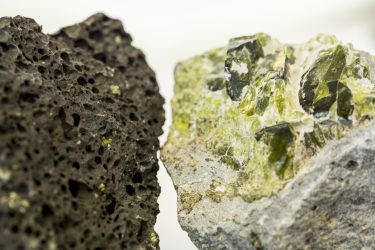
Volcanoes are an explosive and mysterious process by which molten rock from Earth’s interior escapes back into the atmosphere. Why the volcano erupts—and where it draws its lava from—could help trace the lifecycle of materials that make up our planet.
New University of Washington research shows that a common type of volcano is not just spewing molten rock from the mantle, but contains elements that suggest something more complicated is drawing material out of the descending plate of Earth’s crust.
Geologists have long believed that solidified volcanic lava, or basalt, originates in the mantle, the molten rock just below the crust. But the new study uses detailed chemical analysis to find that the basalt’s magnesium—a shiny gray element that makes up about 40 percent of the mantle but is rare in the crust—does not look like that of the mantle, and shows a surprisingly large contribution from the crust. The paper was published the week of June 13 in the Proceedings of the National Academy of Sciences.
“Although the volcanic basalt was produced from the mantle, its magnesium signature is very similar to the crustal material,” said lead author Fang-Zhen Teng, a UW associate professor of Earth and space sciences. “The ocean-floor basalts are uniform in the type of magnesium they contain, and other geologists agree that on a global scale the mantle is uniform,” he said. “But now we found one type of the mantle is not.”
Read more at UW Today »
